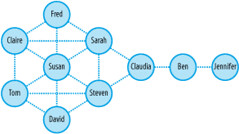
Introduction The Critical Path Method (CPM) is a well-established tool used in project management for planning, scheduling, and controlling complex projects. Developed during the 1950s, it offers a systematic way to identify the critical activities that determine the project’s duration. This article delves deep into CPM, discussing its principles, processes, and benefits.
What is the Critical Path Method?
The CPM is a step-by-step project management technique that identifies critical and non-critical tasks, focusing on both planning and execution phases. The primary goal of CPM is to ensure that project tasks are completed within the specified timeframe by highlighting the crucial tasks that, if delayed, will extend the project’s duration.
Components of CPM:
- Activities and Milestones:
- Activity: A specific task or a set of tasks that form part of a project.
- Milestone: A reference point marking a significant event in the project, typically the start or completion of key activities.
- Duration: The time taken to complete an activity.
- Dependencies: The relationships between tasks. Some tasks can’t begin until others are completed.
- Paths: A sequence of connected activities leading from the project’s start to its finish.
Constructing a Critical Path:
- List Activities: Begin by listing all the tasks or activities involved in the project.
- Sequence Activities: Identify dependencies, determining which tasks must precede others.
- Estimate Time: For each activity, determine the duration.
- Develop the Network Diagram: Create a visual representation using nodes (for activities) and arrows (to depict sequence).
- Identify the Critical Path: In the network diagram, identify the longest path from the start to the finish. This path indicates the shortest time in which the project can be completed. Any delay in activities on this path will delay the entire project.
Benefits of Using CPM:
- Clear Visualization: CPM provides a graphical representation of the project, making it easy to comprehend the sequence and relationships between activities.
- Efficient Resource Allocation: By understanding the critical and non-critical activities, project managers can allocate resources more effectively.
- Risk Management: Identifying the critical path allows managers to foresee potential bottlenecks and address them proactively.
- Improved Flexibility: Non-critical activities may have “float” or “slack,” which is the amount of time an activity can be delayed without delaying the project. This offers flexibility in resource allocation and scheduling.
- Enhanced Communication: The visual representation fosters better communication amongst stakeholders, ensuring everyone understands the project’s progress and potential challenges.
Limitations and Challenges of CPM:
- Static Nature: Once the critical path is determined, it assumes a constant duration for activities. However, in real-life scenarios, activity durations might change.
- Complexity: For large projects with thousands of activities, CPM can become intricate and challenging to manage.
- Overemphasis on Critical Path: Solely focusing on the critical path may lead to neglecting other essential activities, leading to potential project risks.
- Requires Expertise: Effective use of CPM necessitates a deep understanding of the project, its activities, and their interrelationships.
While the Critical Path Method comes with its set of challenges, its utility in project planning and management is undeniable. It offers project managers a structured framework to ensure timely project completion and optimally allocate resources. When combined with other project management tools and techniques, CPM can significantly enhance the likelihood of project success.
